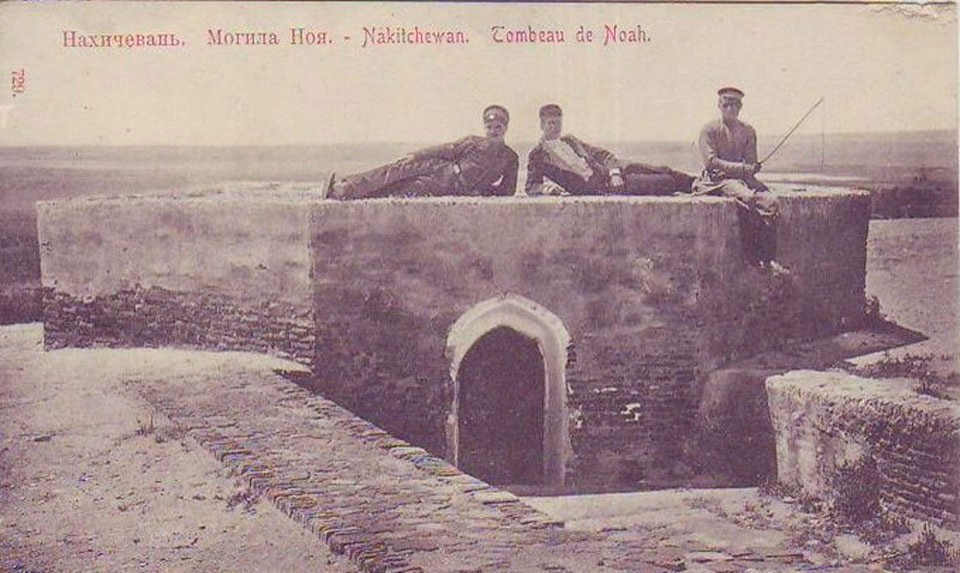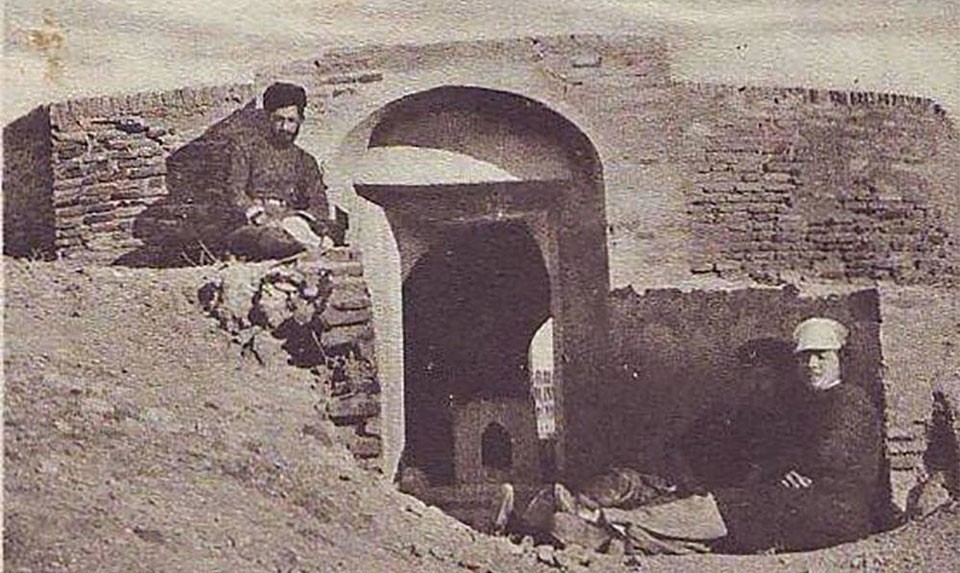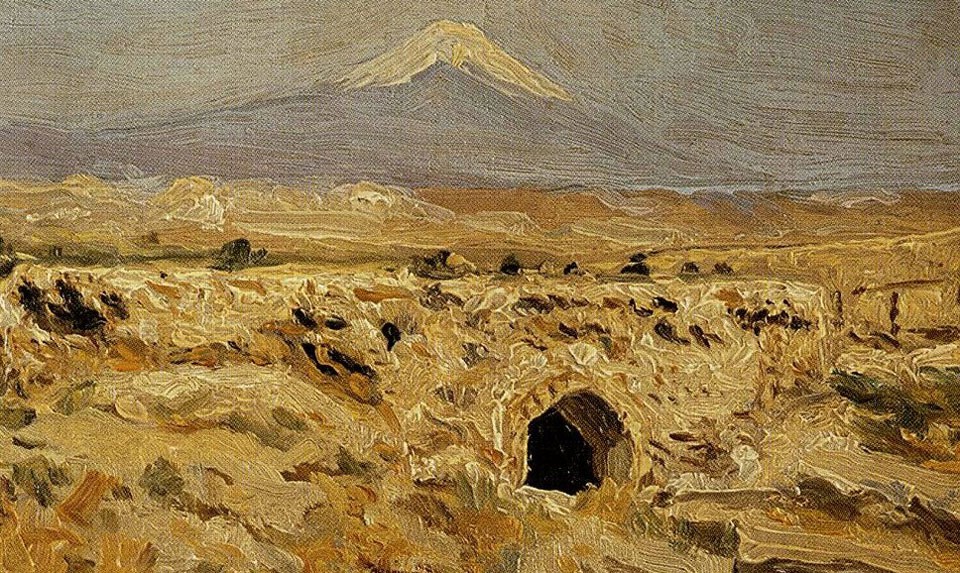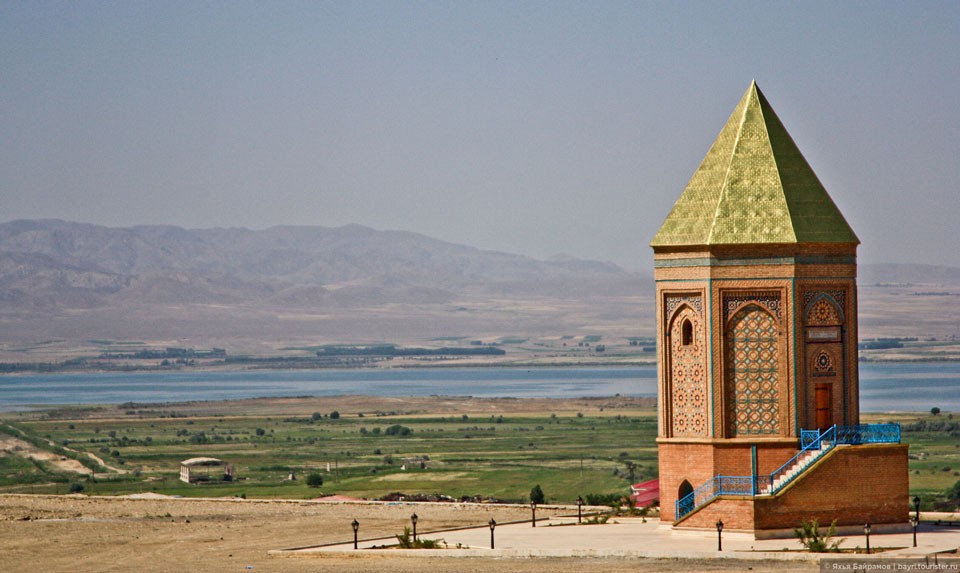Noah's Tomb - In Armenian Nakhijevan
In the southern part of Nakhijevan (former Erivan governorate, currently part of Azerbaijan) there is an ancient and interesting object - the grave of Noah. According to a legend, Armenian Nakhijevan was the place where Noah settled after the Great Flood. The word “Nakhijevan” consists of the Armenian words “nakh-ijevan”, which means “the first place of settlement”. Noah and his family lived in Nakhijevan for a long time, and from here, according to legend, the human race began to spread.
According to the interpretation of the Jewish historian of the 1st century, Josephus Flavius, the Armenian toponym “Nakhijevan” means “the place of the first landing” (Noah's Ark). He wrote that the city of Nakhijevan was built at the foot of the mountain, to the top of which Noah's Ark landed during the biblical Flood.
Nakhijevan was part of historical Eastern Armenia - from the beginning of the 2nd century BC to 428 AD the territory of the modern Nakhijevan was part of the 4 provinces of Greater Armenia - Vaspurakan, Goghtna, Syunik and Yernjak.
During the Russian-Persian war (1826-1828), Nakhijevan became part of the Erivan governorate of the Russian Empire. After the February Revolution, from March to November 1917, the Nakhijevan was under the authority of the body of the Provisional Government - the Special Transcaucasian Committee, from November 1917 to March 1918 the administration of the Transcaucasian Commissariat acted here. Then Nakhijevan was shortly part of the First Republic of Armenia (1918-1920).
On July 28, 1920, the Nakhichevan Soviet Republic was formed as part of the Armenian Soviet Socialist Republic. On June 16, 1923, Nakhijevan was transferred to Azerbaijan by the Bolsheviks and became part of the Azerbaijan SSR.
Today on the net you can find a photo of a postcard issued in 1903, on which the inscription “Noah's grave in Nakhijevan” follows in Russian and French.
From the “Travel Notes of a Pilgrim” (Tiflis, 1889) by N. Ter-Avetisyan we learn the following:
“In Nakhijevan, outside the fortress, there is an Armenian cemetery, where Noah's grave is located. This is a low, octagonal, brick-lined building with a flat roof, resembling the patched remains of a large tower with two entrances from opposite sides. Inside, the building is arched and rests on a thin column in the center At this column they pray, light candles, smoke incense, and this place is popularly called “Noah's Ark” (Noyan Tapan in Armenian).”
During thee Holy Paschal Week, superstitious Armenians went to Noah's grave in droves and used to bring gifts and worshiping the ashes of Noah, glue small pebbles to the arch of the cave, smeared with clay, being sure that if the pebbles stick, then their desires and requests will be fulfilled”.
What follows from the memoirs of Nakhijevan’s Armenians is that during the time of Joseph Stalin reign, when churches, temples and other spiritual structures were destroyed throughout the country, Azerbaijanis, taking advantage of favorable conditions, blew up Noah's grave and destroyed the Armenian cemetery.
Judging by the later ruins, Noah's tomb was made of black tuffa stones, the remains of which were not moved until 1948. From the same reminiscences, it follows that during the years of study at the Nakhijevan secondary school, the Armenian schoolchildren had a habit of gathering there, sitting on stones and studying.
In 2006, Azerbaijani “scientists” announced that they had found the tomb of the prophet Noah. The head of Nakhijevan (The Nakhchivan Autonomous Republic, an exclave of Azerbaijan), Vasif Talybov, hastily built a mausoleum in the form of a mosque on Noah's grave and in 2008 turned it into a museum.




